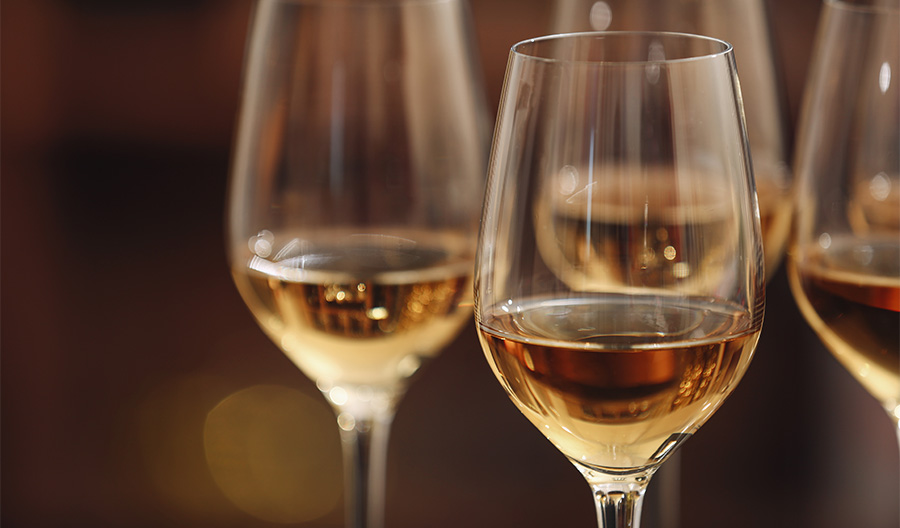Versatile white Port wine offers a range of flavors, from fresh and young aperitifs to rich and complex wines aged in wood for up to 40 years. An impressive drink on its own, it’s used in cocktails like the porto tónico (white Port and tonic) and can pair easily with food.
White Port, made in small quantities by about 30 producers, is unique to Portugal’s Douro Valley, a UNESCO World Heritage Site where Port has been made since the 1600s. The fortified wine can range from mostly dry to intensely sweet.
The same blend of native white grapes used to make Douro’s dry white wines are also used to create white Port. However, the style accounts for only 10% of all Port production. These grapes grow on high ground above the Douro River valley, where the summer temperatures are cooler.


Just like red Ports, white Port is fortified with clear brandy to stop fermentation. It’s either put into wood casks for aging or kept in tanks to be bottled young. Young is easy to drink, while wood aging adds drama. They are typically 17–20% alcohol by volume (abv).
Aged specialty white Ports matured for a generation in oak barrels can rise as high as $300. Once bottled, they generally don’t continue to age, unlike still wines.
Grapes used in white Port:
- Malvasia Fina
- Gouveio
- Viosinho
- Códega do Larinho
- Moscatel Galego Branco
- Rabigato
When you pour white Port, don’t miss the aromas and aftertaste. While the aromatic range is wide, many will display tones of toffee, caramel, orange, lemon, apple and honey. Wood-aged bottlings will offer notes of almond, vanilla and oregano.
Similar to wood-aged tawny Ports, older white Ports are labeled with an age: 10, 20, 30 or over 40 years. The year is not a specific age but denotes characteristics of the final blend.
Some may also be labeled colheita, which means it is from a single vintage. These pours are intensely nutty, with additional prominent flavors of orange zest and toffee. Prices for these rarities are correspondingly high: from $50 to easily more than $100 for 30- or 40-year-old bottles. They are to be treasured and sipped.
When used for cocktails, drier styles mix better. The sweetest white Ports are known as lagrima, or tears, and are best enjoyed on their own or with blue cheese, foie gras, pâtés and sardines. All young white Ports are great with seafood.
White Port ranges in price and can be difficult to find. Here, are some of our favorite bottles for sipping straight or mixing with tonic for a traditional taste of Portugal.

